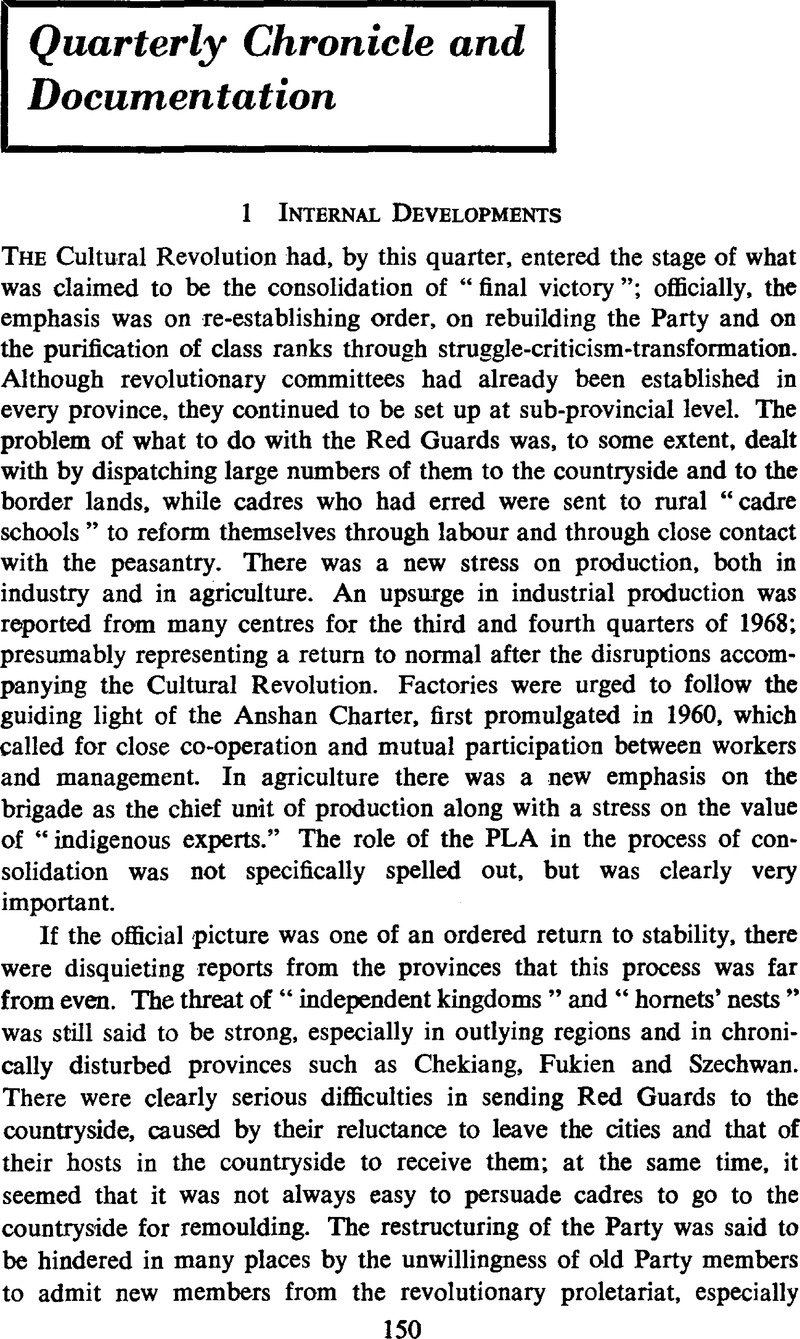No CrossRef data available.
Published online by Cambridge University Press: 17 February 2009

1 Quotation marks added. The words in quotes are substantially identical with Mao's directive quoted in the People's Daily New Year's Day editorial of 1 January 1968, except for the replacement of “should be” by “is.”Google Scholar
2 Instead of the now classic phrase “Marxism-Leninism, Mao Tse-tung's thought,’ which in effect places a sign of equality between the two, this text uses for the most part “Marxism, Leninism, Mao Tse-tung's thought,” which puts Mao rather in the apostolic succession. Hence the “and” in our translation, which makes the English read more smoothly and does not appear to alter the meaning.Google Scholar
3 “T'u-ku na-hsin,” the slogan attributed to Mao in October 1968.Google Scholar
4 Some other texts read here “within and without.”Google Scholar
5 “Creatively” is the adverb which has been used by the Chinese themselves since 1966 in translating the slogan “huo-hsüeh huo-yung.”Google Scholar
6 Some other texts read here “three-eight working style.”Google Scholar